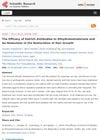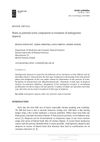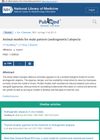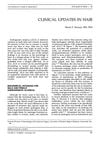TLDR The stump-tailed macaque is a good model for studying human hair loss, but it's expensive and hard to find, while rodent models are promising for understanding hair growth and finding new treatments.
The review from 22 years ago discussed the use of animal models in studying male pattern (androgenetic) alopecia. The stump-tailed macaque (Macaca arctoides) was identified as a suitable biological model for human androgenetic alopecia, although its use was limited due to expense, danger, and low availability. Rodent models, including testosterone induced alopecia and various xenograft approaches, were considered promising for providing fundamental information on normal and abnormal hair growth. These models were also seen as useful for developing new therapies to treat hair loss.
4 citations
,
January 2020 in “Hair Therapy & Transplantation” Personalized nutrition is more effective for hair loss than generic supplements.

Ostrich antibodies can help restore hair growth in people with a specific type of hair loss, increasing hair count by 71% on average.
23 citations
,
March 2016 in “American Journal of Primatology” In female rhesus monkeys, hair gain is linked to reduced stress levels.
 3 citations
,
January 2016 in “Annals of Dermatology”
3 citations
,
January 2016 in “Annals of Dermatology” Minoxidil was the most effective treatment for hair regrowth in rats compared to Aminexil or Kerium.
 6 citations
,
March 2014 in “Herba Polonica”
6 citations
,
March 2014 in “Herba Polonica” Plant extracts may help treat hormone-related hair loss.
 6 citations
,
August 2001 in “PubMed”
6 citations
,
August 2001 in “PubMed” The stump-tailed macaque is a good model for studying human hair loss, but it's expensive and hard to find, while rodent models are promising for understanding hair growth and finding new treatments.
 19 citations
,
January 1997 in “Dermatologic Clinics”
19 citations
,
January 1997 in “Dermatologic Clinics” Most treatments for hair loss in 1997 were not effective for most people, and maintaining hair growth was difficult.





